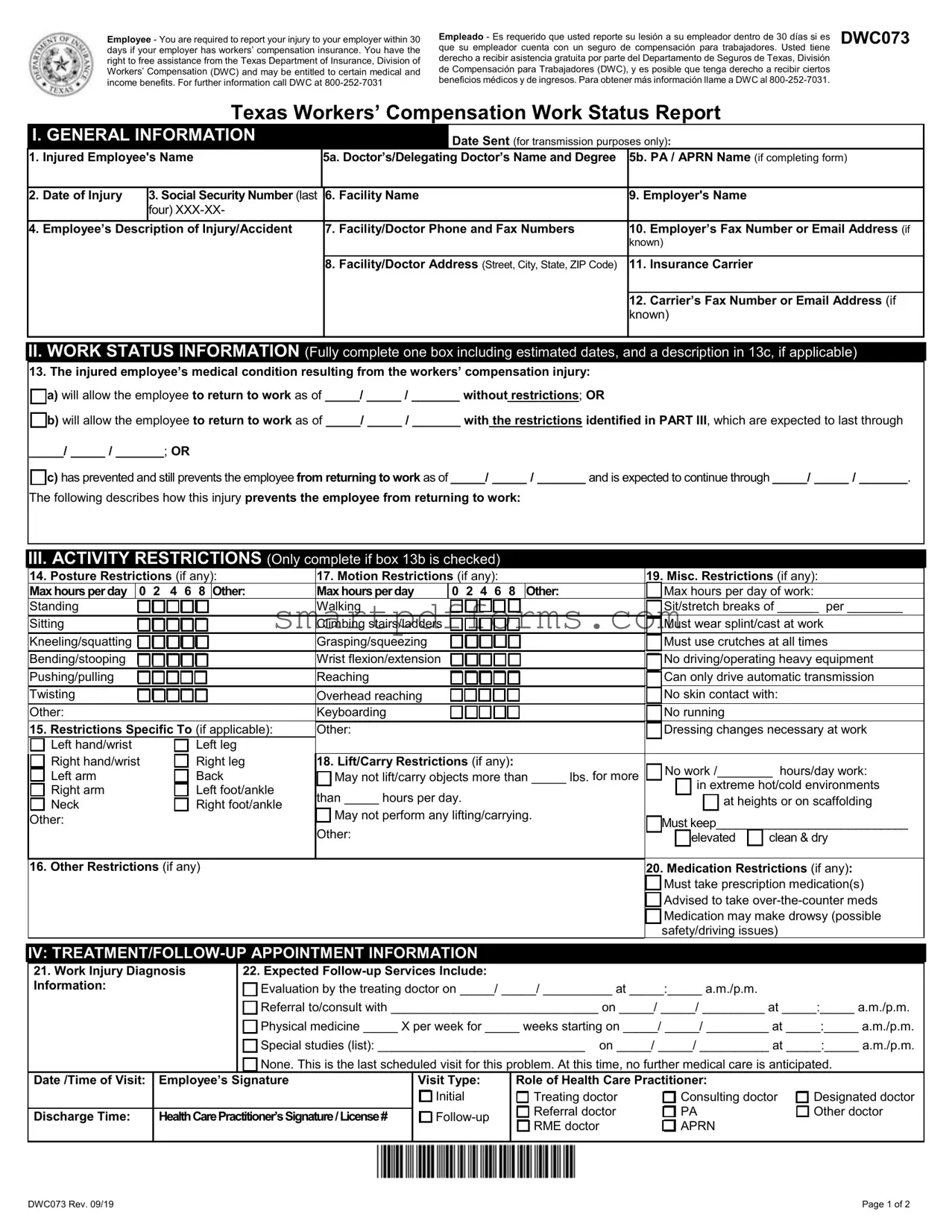In the state of Texas, employees who suffer work-related injuries or illnesses are navigated through a process that involves reporting their condition and seeking necessary medical and income benefits with the guidance of the Texas Department of Insurance, Division of Workers’ Compensation (DWC). A crucial document in this process is the DWC 73 form, officially known as the Texas Workers’ Compensation Work Status Report. This form serves multiple purposes including, but not limited to, reporting the employee's injury to their employer, documenting the medical status and work capability of the injured employee, and specifying any work restrictions or necessary modifications based on the medical evaluation. Doctors and healthcare providers fill out the form after examining the injured employee, providing a detailed account of the employee’s current medical condition, work status, and any restrictions that should be considered by the employer. Carefully laid out, the DWC 73 form includes sections for general information about the injured employee, detailed work status information, specific activity restrictions if applicable, and instructions for follow-up treatment. It is designed to facilitate communication between medical providers, employees, employers, and insurance carriers, ensuring that all parties are informed about the employee’s health status and work capability. Understanding the specifics of how and when to file this form, as required by the Texas Administrative Code, is essential for compliance and to support the injured worker's recovery and return to work. For further assistance and clarification, the DWC offers free resources and guidance, advocating for the well-being and rights of injured workers within the state.


